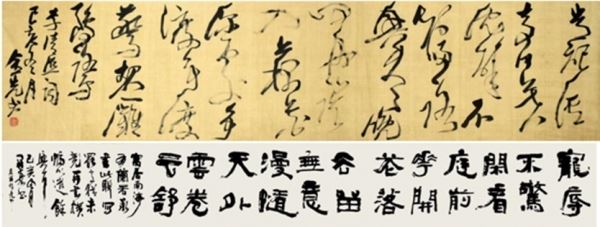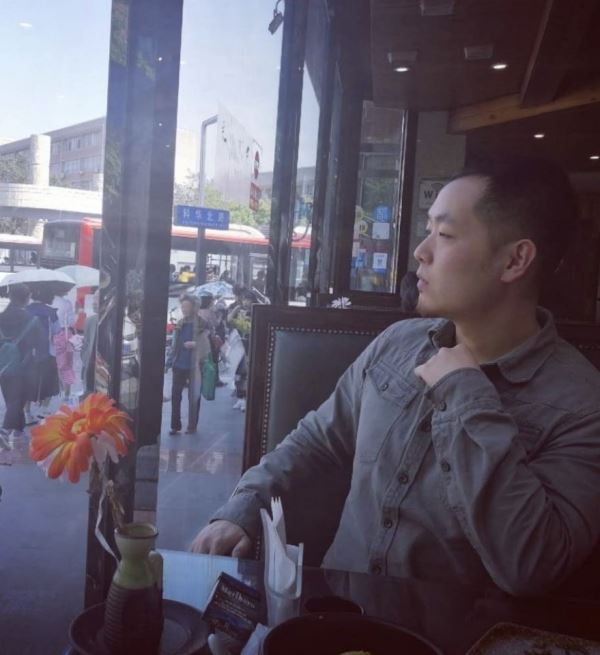 Chinese calligrapher Lv Jinguang's calligraphy(above) and Hou Kaijia's calligraphy
Chinese calligrapher Lv Jinguang's calligraphy(above) and Hou Kaijia's calligraphy
The negative effects of changes in the background of Chinese characters ferment and play out in generations of koreans. After the abolition of Chinese character education in South Korea, especially the Korean young people lost the ability to read Chinese characters. To a large extent, the use of Chinese calligraphy in society is limited. However, from the perspective of pure art, apart from the text and cultural background, people's appreciation of the beauty and connotation of calligraphy has also caused a great limit.
Although many problems caused by the text background have always been concerned by people, and some people of vision have also expressed their concerns about the current situation of culture and art and called for the protection of calligraphy, these sounds are too weak in the current Korean context, it is difficult to reverse the current situation.
In addition to Chinese calligraphy, of course, there are "Korean calligraphy", "GONG TI calligraphy" or "SHU YI" with Korean characters as the background. Nor does calligraphy seem to be booming today, when it has suffered a lot. The reasons are complex, of course. But the main factor should be attributed to the characteristics of the characters themselves. From the perspective of Korean characters themselves, it is obvious that there are some shortcomings in stroke structure compared with Chinese characters.
At the same time, the calligrapher Kim jong-hee, who really started Korean calligraphy, made artistic creation of Korean characters. This process is only over 200 years now, which is very short compared with the development of Chinese calligraphy. The unclear aesthetic orientation and weak spiritual core make the development of Korean calligraphy lack of strong internal motivation. In addition, social and government support for the popularization and promotion of calligraphy is very limited, so that Korean calligraphy and Chinese calligraphy are in the same bleak situation.
Aesthetic concepts and social orientation often play a guiding role in social needs to a certain extent. The change of the writing background, the change of aesthetics and the lack of attention paid by the society and the government to this art have led to the lack of attention paid to calligraphy by the society as a whole. Then the employment prospect problem caused by the calligraphy development into a vicious circle. According to the investigation of professor zhang zhixun of capital university, take the graduates of capital university as an example.
 ZHANG YIWEI
ZHANG YIWEI
Of the 170 students who graduated in 2016, less than half chose careers related to calligraphy. More than half of the graduates switched careers. It can be seen that the employment prospects of calligraphy are not optimistic. The popularization of computers and mobile phones has seriously squeezed the living space of traditional writing. Professions closely associated with calligraphy include teachers, researchers, professional artists, calligraphy designers, and private educational institutions. The narrow scope of employment makes it difficult to get into calligraphy related industries.
And on the more common private education institutions or book art training, the author of the survey is also due to the inability to recruit enough students and difficult to sustain. Worrying job prospects have seriously discouraged south koreans from learning calligraphy. As a result, it is difficult for many universities to ensure a sufficient number of students, so they have to give up the subject of calligraphy. South Korea's first university to offer calligraphy has also stopped enrolling. It is not hard to see how bad Korean calligraphy is today.
<중국 / 동아대 국제전문대학원 박사과정>